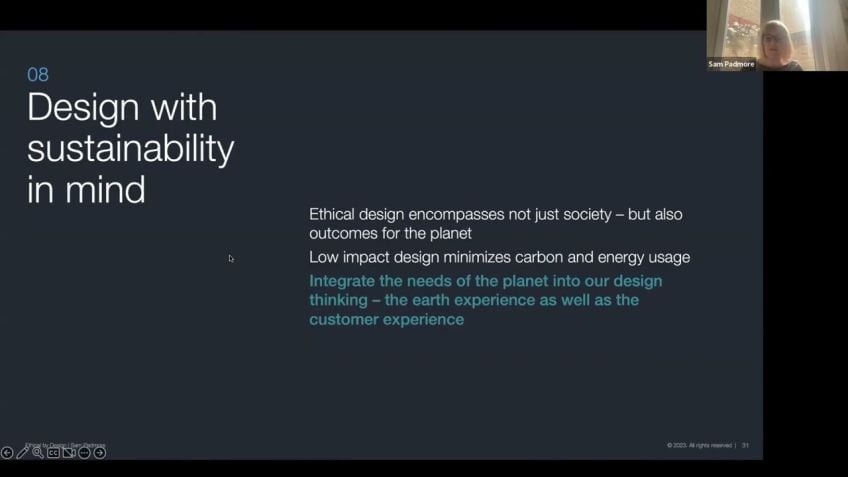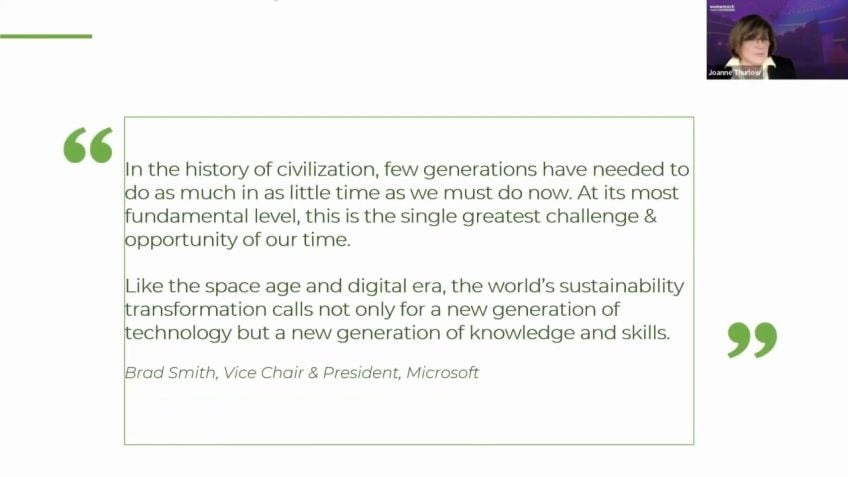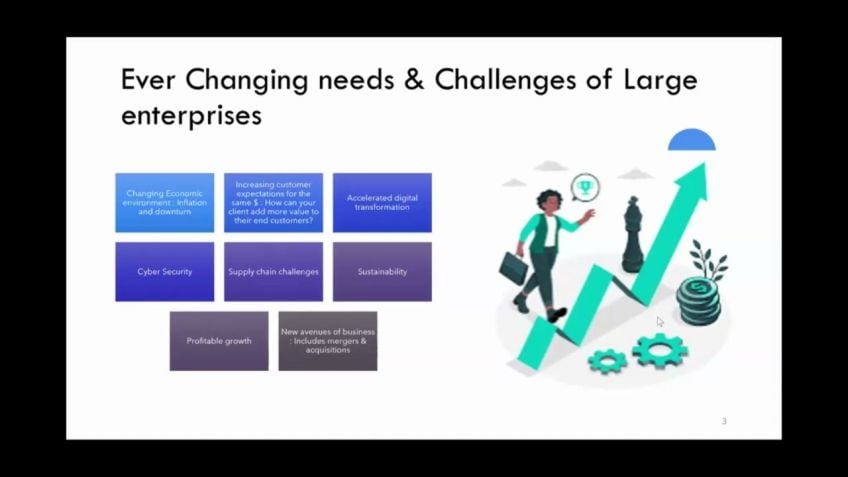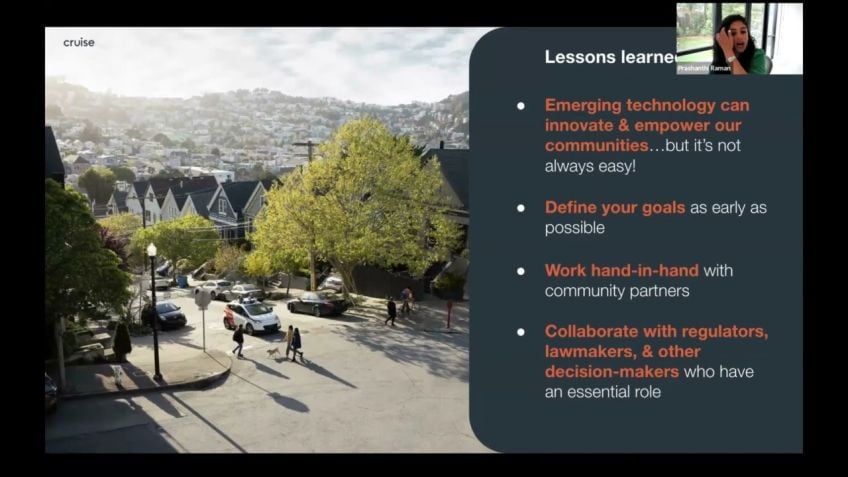The time is now for businesses to lead the way in the climate revolution
Sustainability: Transforming Global Businesses
Our world is increasingly drawn towards sustainability. With increased attention to greenhouse emissions and climate change discussions arising from events like COP 26, it's no secret that this issue is rising to the forefront of global consciousness. There is enormous pressure for companies to organize around sustainability and its associated topics, necessitating a progressive conversation on sustainable business practices and their implications.
The question then arises: what exactly is involved in the path to becoming a sustainable enterprise?
Stakeholder Pressures in the Sustainability Landscape
Businesses face an array of challenges in their quest towards sustainability, as demands for sustainable practices grow from numerous quarters:
- Regulatory Bodies: There's intensifying expectation for transparency and commitment to Environment, Social, Governance (ESG) standards. Such standards mainly arise from the demand for climate-related financial disclosures from organizations.
- Employees: More workers, especially millennials, are opting to work only for organizations that pledge strong commitments to sustainability.
- Investors: A growing interest in sustainability-related investments is emerging. Investors are beginning to lean towards companies with robust sustainability agendas and good ESG ratings.
- Partners: Companies in consortia are now required to demonstrate their commitment to sustainability.
- Customers: Sustainable products and services are becoming increasingly popular among consumers, driving revenues for companies focusing on these.
Whether you're an employee, an investor, or a customer, there's a clear trend toward sustainability and a shared responsibility to take care of the planet.
Charting the Path to a Sustainable Enterprise
Organizations looking to become sustainable can break down this process into three parts.
Commit: This is the first step towards becoming a sustainable organization. Most companies have made commitments to become carbon neutral or reach net-zero emissions by specific dates.
Act: This is the more difficult step, involving three key areas:
- Products & Services: Considering the sustainability of their offerings, and the packaging they come in, can significantly help companies decrease their overall carbon footprint.
- Sustainable Operations: Companies can focus on procurement strategies, energy supplies, and optimizing supply chains to improve their sustainability. The principles of a circular economy, such as reducing waste, reusing, and recycling, play a significant role in this area.
- Sustainable IT: Businesses should consider the environmental impact of their technology use. As companies become increasingly reliant on technology, the question of how to minimize its environmental impact becomes more critical.
Can IT Be Sustainable?
Even as sustainability becomes a business imperative, the concept of sustainable IT appears to have been overlooked. Data centers, for instance, contribute 1% of the world's emissions. However, companies are innovating to reduce these emissions. Microsoft has explored setting up undersea data centers to reduce cooling requirements, a major energy consumer in data centers.
Many technological giants, like Dell, Microsoft, and Amazon, have made massive commitments to reduce their greenhouse gas emissions. For instance, Dell is on track to reduce its emissions by 40%, while Microsoft aims to be carbon negative by 2030.
Reducing the IT Carbon Footprint
IT departments can actively reduce their carbon footprint in three simple ways:
- Assessing baseline figures and sources of emissions, such as data centers, networks, and end-user devices.
- Defining a roadmap to implement green IT programs, potentially using renewable energy and energy-efficient equipment.
- Planning for deployment to maximize the impact of these measures.
IT is a major area where companies can take steps towards becoming sustainable. Needless to say, the more we reduce our emissions, the more positive impact we have on air quality, the environment, and ultimately, our planet's future.
Be it committing to a sustainable lifestyle or implementing greener business practices, everyone has a crucial role to play in this shared responsibility of protecting our planet.
Video Transcription
I'm going to talk, um speak with you all today very briefly about um on the topic of sustainability. I know that most of you are quite aware, uh must be quite aware of what is going on in the world on this topic.It's um it's extremely critical these days and it's getting a lot of attention with the cop 26 and um uh the greenhouse emission uh discussions and climate change and everything else. So I'm hoping that today we have an interesting uh talk and discussion around uh the, the problems facing, especially from a business perspective and uh what organizations uh can do for that. Um Let's just get started with the, I don't know, I guess you can see my screen, right? OK. So, uh all right. So the, the, the um I want to focus a little bit about what really is. There is an immense pressure globally in terms of um uh getting uh in getting companies uh organized uh around the topic of uh sustainability. And uh and, and if you look at the pressure there, hang on, I'm trying to move the slides at the same time. OK. Uh And if you look at the um the there is immense pressure from multiple sets of uh stakeholders.
So if you see um the, the, you know, one set of stakeholders is the entire regulator community who are really expecting a far, far higher degree of transparency uh and the ESG commitments, which is really coming from the uh climate uh financial, climate related financial disclosures that are expected from organizations.
Uh And on the other hand, you have employees as well who are saying that, hey, look, um we, we only want to work for organizations which are quite, um which are making a strong commitment towards uh sustainability. And, and there are multiple surveys done around the millennials um uh millennials who are saying that uh this is what they need. And in fact, the numbers show that about 64% of them do not want to join an organization that doesn't have any serious sustainability uh commitments on the on another aspect of it is investors are increasingly focused on this topic and are willing to invest in companies which have a strong sustainability agenda and have, uh you know, good ESG ratings.
I was talking to some private equity investors just last week who said that they will not invest in any, any organization that doesn't have that commitment and, and, and if they're not, OK, they can be, if they are partially on the way there, they can be a bit lenient and say, OK, you have two years uh uh to do this and, and just looking at the statistics, if you look at the Clean energy funds, which are uh uh um they have had, I think in 2020 the measure was that they had 400% growth in the performance of the Clean Energy Fund.
So the whole its sustainability is not just an imperative for organizations, but increasingly, you also see it as uh as um where the investments are being driven to clean energy, clean tech funds and so on. The uh fourth dimension of that is a partner ecosystem where partners are um companies like ours are starting to say that. Look, if, if you're working with us, then you know what is your commitment to uh sustainability? And are you taking strong actions uh towards that? And um and we are being asked the same question from our partners as well and this is there throughout the value chain because truly to become a net zero company, it's not enough if you do something within your organization, but you have to ensure that your entire supply chain from end to end, including your partners, your suppliers, everybody is also um uh taking care of their carbon emissions and uh to work towards a net zero goal.
Um And we see contracts in which they expect us to make statements around what is our commitment to ESG overall. The fifth element is customers and, and there is increasing uh pressure from customers who are saying that we will buy sustainable products. And there is research that shows that companies which are focused on sustainable products and services have actually seen their revenues jump. So today when we talk about fast fashion and everything else, I mean, there's there will be a time where you start to think about is my am I polluting the planet with the with the products and services that I make? And are my customers willing to um buy that or are they willing to pay a premium as many are in order to get these sustainable products and services? So, so from whether you'd look at any, any dimension, any stakeholder here, I think there is immense pressure across the board in order to comply with and ensure that we are protecting the planet. And that ultimately is the goal of what we're looking at in sustainability to see that. Um you know, we are not depleting the natural resources and we're taking care of the planet and preserving it for future generations.
If, if I move to the next slide, which is around what, what, what are organizations, um what can organizations do about it and what is being done about it? So I, I we can look at it in um three parts. OK. So the first is um the first is uh I'm sorry if you can't see the slides, but if I put it on full screen mode I cannot come back to the presentation. So I'm struggling with switching between the two. Um So when, when, when, when you look at what can organizations do about it, what is the path to becoming a sustainable um enterprise? Then you, you see that there are, there are, I think three aspects to it. The first is the commit and I think most organizations have done that. So most people have declared and say that I'll be carbon neutral by 2025 I'll be net zero by 2050. Um and so on. So, so the commitment, I would say most organizations have done the commitments and it is becoming extremely essential even at the board level to do that, whether public or private they have been, they have uh done that and comes from the CEO and CFO in terms of committing to the board and the stakeholders as to what are their goals for becoming net 00 the more difficult thing is really the next step which is to act on it and, and the a part of it can take part can take place in three areas.
So the first is around the products and services. The second is around sustainable operations and the third is around it. So products and services we talked about, for example, if I take the very simple case of um of let's say fashion, you know, how sustainable are these, those clothes are being made? Uh And so on the, you know, it, it, it really um boils down to my, all my products and services, low carbon um f is the packaging good. So there's been questions around consumer products. Why do some of the products have to come in cardboard boxes? For example, why, why don't we just display them on the shelves as they are? So, so multiple dimensions to not just the product or the service, the packaging and everything that goes into that product. The second dimension is around the sustainable operations, which is really on how you run the manufacturing itself in terms of what is the procurement strategy? How are you having, do you have a low carbon energy supply? Are you using renewable energies? Are you using, are you burning fossil fuels? Are your factories um dear decarbonize um is your supply chain uh efficient and uh um uh carbon efficient.
Uh and also whether you are really following the principles of a circular economy in terms of, you know, reducing waste, not creating it, recycling, reusing recycling and all of that stuff. So, so that, that part really is around the um the sustainable manufacturing and operations.
The last part is, is uh is what I'd like to spend a little bit of time on is around sustainable it, which is what is the environmental impact of the it that we use and increasingly all our businesses, whether they're manufacturing or service, banking, consumer products, energy transportation, all of them increasingly high degree of it usage in these organizations.
And therefore, the, the, the real question to ask is what is the impact of the um it uh in uh I in, in the businesses, not just in tech companies, but also it in uh various uh organizations. So le let's talk about a little bit more. So while sustainability has become, um you know, has become a business imperative for every organization, it seems to have been overlooked unfortunately. And, and what is happening here is we, we did a poll of about 1,001,000 companies and then they said that while 50% of the firm say that they have an enterprise wide sustainability strategy, only 18% of them have a sustainable it strategy. And today I want to talk a little bit more about it because that's where you know, this is the tech meeting and I'm assuming all of you are in the tech business and, and really many of you can truly take action in order to uh do something about this. So when we talk about sustainable it, what is it? Let's take a look at data centers. OK. Data centers, 1% of the world's emissions come from data centers in the US. It's as high as 2%. OK? One of the highest consumers of energy and so much so that several of the tech companies are truly making large commitments and also uh trying to innovate and how they can reduce the emissions that are related to it.
So I don't know if you've heard of this, but Microsoft, for example, um is trying to take a look at setting up underwater. So undersea data centers so that the cooling requirements, the power requirements to cool their data centers as well, which is one of the biggest consumers of energy, by the way, in the data centers, the cooling that is required there. So, so they, they're trying to drive, I don't know whether then, then they will actually implement it. But that's something that they're experimenting with. And they have already announced that their data centers will be um uh carbon neutral in the next couple of years. The same thing has been done by Amazon. The same thing has been done by Google and so on. So all of the tech companies here have taken big commitments around how can they do it? So um Dell for example, is, is on its way to reducing greenhouse gas emissions by about 40%. Microsoft said they'll be carbon negative by 2030 their massive data centers, 70% of that will be carbon neutral by uh will run on renewable energy by 2023. And they're also looking at internally, they also put a tax on um on carbon emissions so that each department competes with another in terms of being more efficient.
So really it is the big area and I think everybody here can truly uh take a look at how they can commit to making this more uh efficient just to give you some uh statistics, you know, 3.3 percent of the worldwide um energy consumption comes from it. And this is growing very, very rapidly because of the, you know, massive amounts of uh usage of iot uh data, the exponential growth and the requirements for storage cloud computing. All of this is really leading to a massive um exposure in terms of emissions in in the areas of it. So what can organizations uh do about it? And what can you do about it? I think there are um 33 areas I would start with looking at uh you know, assessing, assessing what is um um the, you know, taking a baseline to be doing a quantitative, as well as a qualitative assessment, the carbon calculators available and broadly, I would look at it in terms of saying what is the impact of data centers, what is the uh uh what is the impact of the networks?
And then what is the impact of actually personal computers, personal, you know, end user devices. And, and one of the research we did with an organization where we work is 73% of the emissions actually come from end user devices. So laptops, smartphones and so on. And there are, you know, there is a big effort through all the tech companies to see what can we do to increase the longevity of these and as well as make the make these end user devices or, you know, much more energy efficient. And uh so once you get that, you know, really understand what is the level of emissions. And today, several organizations don't even have that view of what is their level of emission that they have from it. And uh but from one or two projects that we did for all companies, there are estimated about 10% of an organization's emissions could come from the it footprint itself. And then to define the road map on how can you really start to implement a green it um program. You know, this could mean using renewable energy to look at green equipment, uh you know, coding in a way that it consumes less energy A I for those of you who use A I uh Blockchain, heavy, heavy um uh heavy, heavy consumers of uh uh energy and high carbon emissions there. So, and then you have a plan for deployment.
So um in, in the interest of time, I'm just gonna stop there and just tell you say that I think um as people in tech you have there is that all of us uh can do a lot in terms of reducing the um the carbon footprint that we all generate through our work in it. And um and if anything else, the pandemic has shown that, you know, reducing these emissions have such a positive impact on air quality, the reduction in emissions, which, by the way, during the pandemic in 2020 there was a 5% reduction in emissions uh at that time. So I'm going to stop with that and just leave a couple of minutes to three minutes for, to see if there are any um, questions and so on. I saw, I saw a comment on Bitcoin mining. You're very right, sir. It's uh it is crypto um crypto and Blockchain, one of the biggest um culprits in the uh in it for carbon footprint. Yeah. Which area of it can we start um focusing on? I mean, you can, it, it depends on the level of tech technical debt that you have in your organization if you're already, if your um hardware estate is pretty new, you're on the cloud. Uh I think you're pretty much optimized there. So it depends on where you are today if you have your own in house data centers uh and so on, I would start there. I would start with that first move to the cloud would help. Um I would look at apps rationalization.
So, so it it depends on your current state. It eventually in the clouds are in the space. Um I guess it's called cloud computing for a reason. Um On bots uh tracking energy usage, there are multiple applications um that are actually uh we have, for example, Capgemini um provides a carbon calculator uh and does rapid qualitative and quantitative assessments for companies. Uh but these are available elsewhere and, and I think some other consulting firms might offer it too innovations to minimize cooling for data centers. I said lots of things that are being tried. Of course. Um uh II I think several of the tech companies are really working on how they can, you know, the servers itself, how they can consume less energy and then lead to lower cooling requirements. So uh there's a lot of work going on there. But I think the company to watch for is Microsoft, we are really looking at these underwater. So uh their centers on OK. Eleni, you said you have on premise servers to start with that one. Take a look at how old they are, how good or bad their energy consumption is. I mean, there's nothing, I mean, you don't have to be in the cloud, you can also have on premise servers. But the question is, do you have the uh energy efficient ones?
Um Are they uh do you have um uh do you have, have you optimized the usage of that? Are the applications that are just running nonstop on them uh which are rarely being used. So it's not just the servers but it's also the application architecture and the usage that needs to be looked at. Uh Shawna. Yes, there are multiple measures that uh Amazon is taking as well. Uh I don't have it offhand. But um I, I could um I could uh support with you with some details later on. But if you also look at the Aws, you will find uh a number of their uh initiatives there. Absolutely. All of the hyper scalars are actively working on um reducing their uh uh uh energy requirements. And also companies like Dell are even looking at, you know, their laptops. How can we reuse the plastic that is there? Because one of the big issues in it is not just the energy consumption or the carbon emissions, but also how do you dispose of them? We all throw so much waste. So the e waste, the, the the waste that we generate is also a big problem um in the world of sustainability.





